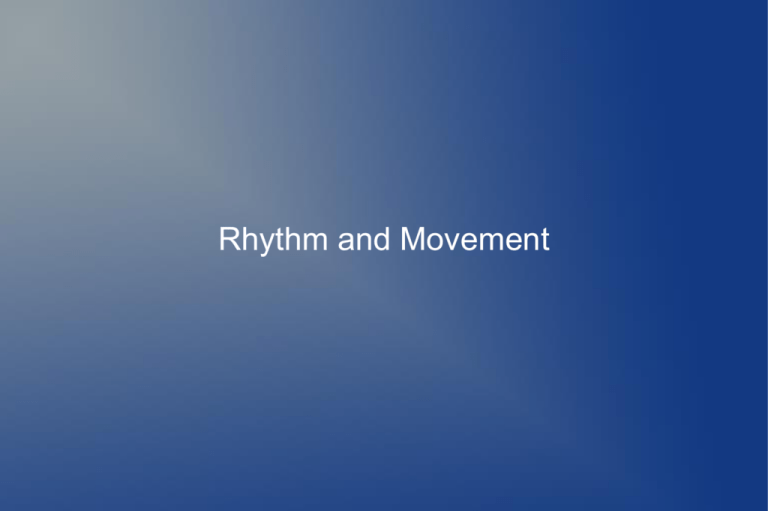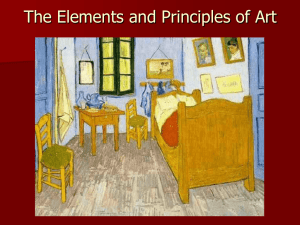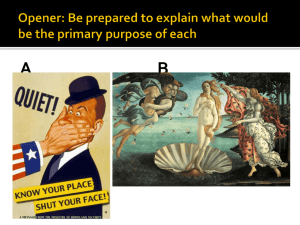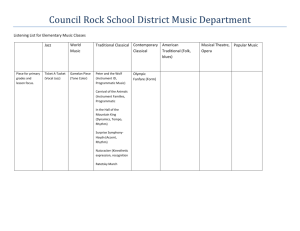Rhythm
advertisement

Rhythm and Movement Rhythm Rhythm is the principle of art that indicates movement by the repetition of elements. Andy Warhol, Marilyn Monroe's Lips, 1962 There are 6 Types of Rhythm 1.) Visual Rhythm-rhythm you receive through your eyes rather than through your ears. A motif is a unit that is created in visual rhythm. A Pattern is a two-dimensional decorative visual repetition. Examples of Visual Rhythm African Kente Cloth The Great Mosque at Cordoba, Spain 6 Types of Rhythm 2.) Random- a motif repeated in no apparent order, with no regular spaces in between. Examples of Random Rhythm Jackson Pollock, Number One, 1948 Bowl, Kongo People 6 Types of Rhythm 3.) Regular- identical motifs and equal amounts of space between them. Examples of Regular Rhythm Andy Warhol, Marilyn Monroe's Lips, 1962 Empire State Building 6 Types of Rhythm 4.) Alternating- can occur several ways: to introduce a second motif or to make a change in the placement or content of the original motif Examples of Alternating Rhythm Navajo Blanket, 1855 Japanese Plate, Edo Period 6 Types of Rhythm 5.) Flowing- created by repeating wavy lines. Examples of Flowing Rhythm Drew Brophy, Life At Sea Botticelli, The Birth of Venus (detail) 6 Types of Rhythm 6.) Progressive- a change in the motif each time the motif is repeated. Examples of Progressive Rhythm M.C. Escher, Sky and Water I Hiroshige, Okazaki How Artists Use Rhythm to Create Movement Movement is used to convey feelings and ideas. It can be comforting and predictable, or it can be monotonous, symbolic, or graceful. Visual Movement is the principle of art that is used to create the look and feeling of action and guide the viewers eyes throughout the work of art Bridget Riley, Blaze 3 Futurism A group of artists tried to do more than control the way viewers looked at art. These artists were called Futurists. Futurists used rhythm to capture the idea of movement itself. They used the word dynamism to refer to the forces of movement. They believed that nothing was solid or stable. They showed forms changing into energy by slanting and overlapping surfaces. Futurist Art Giamcomo Balla, Dynamism of a Dog on a Leash Umberto Boccioni, Unique Forms of Continuity in Space Actual Movement Alexander Calder was a mechanical engineer. Calder created his art by repeating abstract shapes and putting them in real motion using air currents and gravity. Calder's art pieces were called kinetic sculptures. Kinetic sculptures actually move in space. Calder's sculptures were given the name mobiles. Moving sculptures have been called mobiles ever since. Alexander Calder Calder, The Star Calder, Enseign de Lunettes






